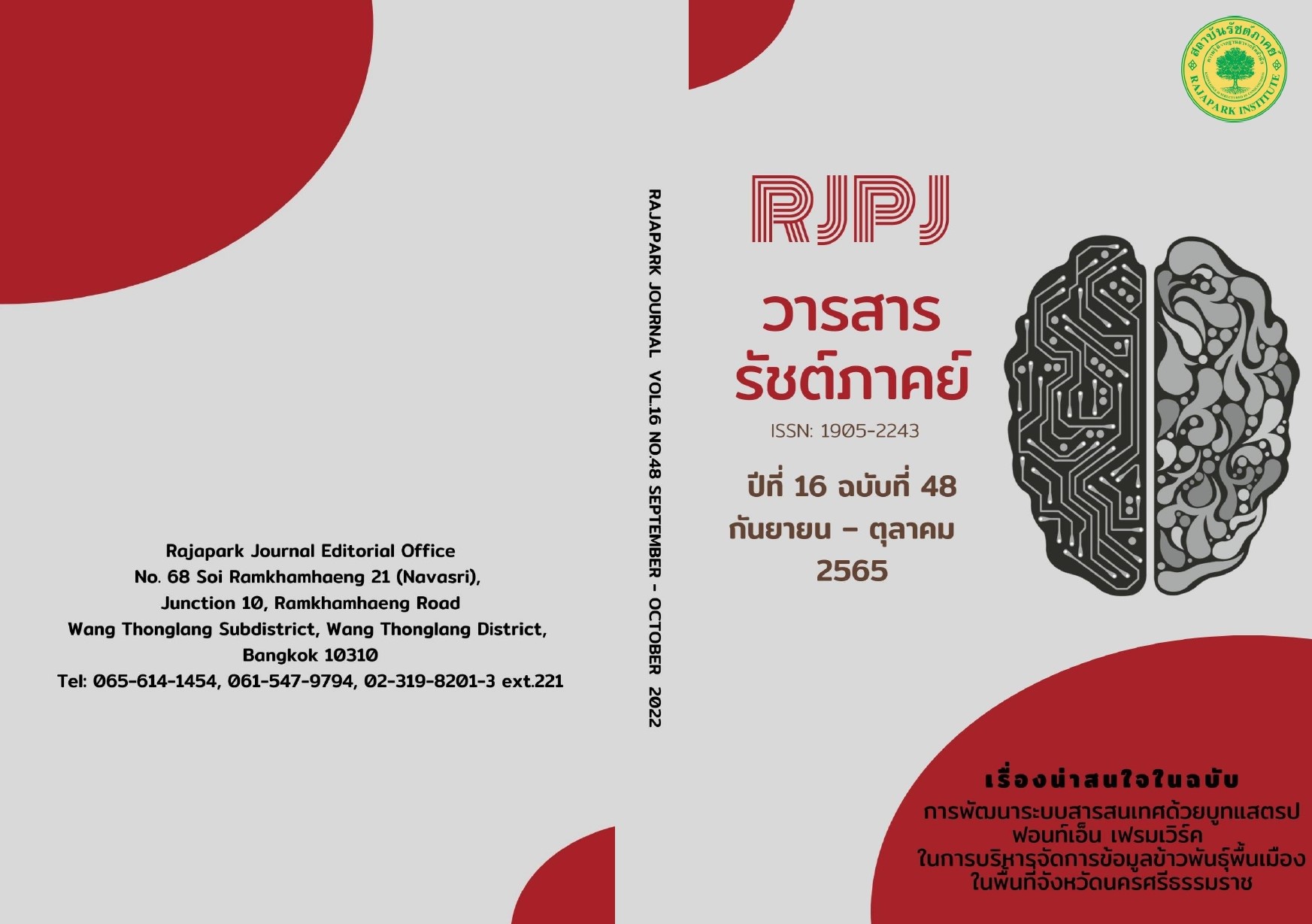The Impact of Thailand from Non-Governmental Organizations on China-Myanmar Infrastructure Investment
Main Article Content
Abstract
The research aimed to study the basic information, essential elements, and obstacles related to the China-Myanmar infrastructure investment policy to impact on Thailand from NGOs in expanding China-Myanmar infrastructure investment. This research was qualitative research that used research tools by reviewing the literature from papers, articles, and textbooks, along with in-depth interviews with key informants, 15 people, and focus group discussions with key informants, 12 people. It consisted of a group of policymakers, policy leaders to implement in the area and a group of related people, for a total of 15 people. The data from the interviews were analyzed by using content analysis. The results of the study found that China has various investments in Myanmar, including the construction of an international economic corridor under the belt and road initiative project. The findings revealed that even if China has invested comprehensively in the belt and road initiative by covering the transportation routes to the south of China, but the strategy of expanding China-Myanmar infrastructure investment has not yet been as successful as it should be. The path connecting China with Kyaukpyu deep sea port to the Andaman Sea has faced many obstacles because of the role of NGOs, including internal politics of Myanmar, human rights, and environmental issues. These have both positive and negative impacts on Thailand. The main positive effects are that China is a big country, has a good political background and managerial potential, as well as having had a good relationship with Thailand for a long time in terms of ethnicity and attitude. Therefore, it is an opportunity for Thailand to expand its investment. The negative effect is that tribal and ethnic conflicts in Myanmar, including between the army and various ethnic groups, cause Thailand to bear quite a lot of immigration problems.
Article Details

This work is licensed under a Creative Commons Attribution-NonCommercial-NoDerivatives 4.0 International License.
Views and opinions appearing in the Journal it is the responsibility of the author of the article, and does not constitute the view and responsibility of the editorial team.
References
Amnuaykanchanasin, A. (2021). Political Unrest in Myanmar with the Thai Economy and Industry. Office of Industrial Economics. https://www.oie.go.th/assets/portals/1/fileups/2/files/ArticlesAnalysis/Myanmar_and_the_economy.pdf
Arase, D. (2015). China’s Two Silk Road Initiative: What It Means for Southeast Asia. Southeast Asia Affairs, 25-45. https://muse.jhu.edu/article/583040
ASEAN and Asia Studies Center. (2019). Research Integration Plan on Research and Innovation for Social and Environmental Development in Terms of Distribution of Prosperity and Livable Cities in Thailand and the Mekong Particle Group for Regional Development: The Context of NGOs Affecting China’s Expansion of Land and Water Infrastructure Investments According
to Policy on Routes to the South of China. Sustainable Development and Sufficiency Economy Studies Center, National Institute of Development Administration: SuDSESC.
Charassangsomboon, B. (2019). Financial Cooperation under the Belt and Road Initiative: Implications on Thailand’s Economic Security. The National Defence College of Thailand Journal, 61(1), 28-44.
https://so05.tci-thaijo.org/index.php/ratthapirak/article/view/188930
Charoenwadhanasuk, S. (2017). One Belt One Road (OBOR). http://www.dsdw2016.dsdw.go.th/doc_pr/ndc_2560-2561/PDF /m8574/8574%E0%B8%9E%E0%B8%A5.%E0%B8%A3.%E0%B8%95.%E0%B8%AA%E0%B8%B8%E0%B8%A3%E0%B8%9E%E0%B8%87%E0%B8%A8%E0%B9%8C%E0%B9%80%E0%B8%88%E0%B8%A3%E0%B8%B4%E0%B8%8D%E0%B8%A7%E0%B8%B1%E0%B8%92%E0%B8%99.pdf
Keawbutdee, P., Amjui, S., & Detjit, A. (2021). Globalization Leadership. The Journal of Research and Academics, 4(2), 283-296.
Meeboonlue, J., & Peebua, P. (n.d.). Rohingya Problems and Solutions. Strategic Studies Center, The National Defence Studies Institute. https://www.sscthailand.org/uploads_ssc/rhohingya.pdf
Ministry of Labor. (2022). Operations of Foreign NGOs in Thailand. https://www.doe.go.th/Prd/NGO/General/Param/Site/172/Cat/27/Sub/0/Pull/Singleview/View/Detail/Object_ID/563
Munkhong, A., & Rachathani, A. (2017). The Shift in the Trigger and its Impact on the Community in the Case of Ban Hua Wiang, Chiang Khong District, Chiang Rai Province. http://www.mekongci.org/images/work-mekong/report-kai.pdf
Salika. (2019, Dec. 19). NGOs: Origin and Change. SALIKA. www.salika.co/2019/12/21/Ngos-have-been-changed/
Satchanan, S. (2015, Dec. 10). China’s Role in Myanmar. ASEAN Insight, Bangkokbiznews.
https://www.bangkokbiznews.com/blogs/columnist/111256
Sukdanont, S. (2019). The Effects and Trends of the New Silk Road Development in the 21st Century. CUTI. http://www.cuti.chula.ac.th/articles/494/
Thitanon, B., Jarayabhand, P., & Jarusombat, S. (2022). The Solution of Rohingya Refugee in the Maritime National Security Dimension. RTNA Journal of Social Sciences, Humanities and Education, 9(1). 131-144. https://so06.tci-thaijo.org/index.php/rtna-socialj/article/view/252545
Thongtakorn, C., & Niyomthai, S. (2018). Analysis of China’s 21st Century Silk Road Policy. Thai Journal of Public Administration, 6(1), 95-126. https://so05.tci-thaijo.org/index.php/pajournal/article/download/137328/102231/364163


